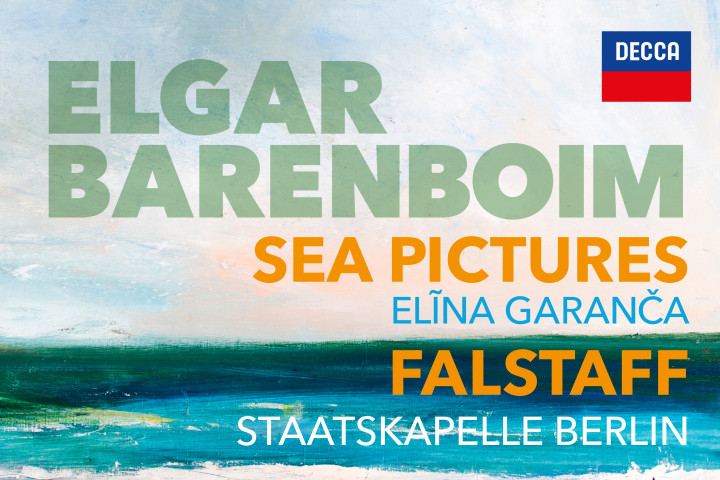Daniel Barenboim continues his acclaimed Elgar series on Decca Classics with the release of ‘Sea Pictures' and 'Falstaff’

06/19/2020
Following on from 2017’s Dream of Gerontius, Daniel Barenboim releases the next oeuvre in his Elgar series for Decca Classics: ‘Sea Pictures / Falstaff’, recorded live in December 2019 with the Staatskapelle Berlin and Latvian soprano Elīna Garanča.
Barenboim first recorded Sea Pictures forty years ago in 1980 with the London Philharmonic Orchestra and Yvonne Minton, and returns to the repertoire in this new recording, released on 24th July 2020.
Sea Pictures was written during the summer of 1899, in the weeks after the successful premiere of the Enigma Variations had brought Elgar to national prominence. The piece is in an unfamiliar form for the time, a song cycle for voice and orchestra, on poems by different authors with a subject in common – one suitable for a county with an extensive shoreline, that of the sea.
Elgar creates his “pictures” with masterly depictions of nocturnal sea-swell for Roden Noel’s “Sea Slumber-Song”, a storm breaking around the island of Capri for “In Haven” by the composer’s wife Alice (an adaptation of a “Lute Song” with slightly different words from 1897), the expanses of the ocean for Elizabeth Barrett Browning’s “Sabbath Morning at Sea”, exotic scenes for Richard Garnett’s “Where corals lie”, and fiercely breaking waves for “The Swimmer” by the Australian Adam Lindsay Gordon. The reminiscences in this last poem of an old love affair prompt musical references back to “Where corals lie” and “Sea Slumber-Song”, reinforcing the unity of the cycle.
Of all Elgar’s major works, Falstaff gave him the most pleasure to write. In July 1913, while he was working on it, he told a reporter: “I have, I think, enjoyed writing it more than any other music I have ever composed … the hours I have spent on it have brought me a great deal of happiness.” In undertaking the project, Elgar was fulfilling a long-cherished ambition: his earliest sketches headed “Falstaff” date from 1901. In the end, the work was written in less than six months in the spring and summer of 1913, while Elgar was living in London at the centre of national musical life.
Rather than adopting the variation plan of Don Quixote, Elgar cast Falstaff in Strauss’s familiar form of the narrative tone-poem. He called it a “symphonic study”: “symphonic” because like a symphony it is founded on motivic development and long-range tonal planning; “study” because it amounts to a character-study of Shakespeare’s Sir John Falstaff. It is based on the scenes in the two Henry IV plays featuring Falstaff and Prince Hal, the future Henry V. (Elgar ignored what he called the “caricature” in The Merry Wives of Windsor, the main source of Verdi’s opera Falstaff.) Here, we meet the dissolute, unheroic yet lovable Falstaff together with his cronies, and witness the transformation of Hal from playboy prince, idling his time away in low company, to stern new king.
Adapted from album booklet text by Anthony Burton © 2020
Daniel Barenboim presents ‘Sea Pictures / Falstaff’ with Elīna Garanča and Staatskapelle Berlin, released on Decca Classics on 24th July 2020
Home
Artists
News
Daniel Barenboim continues his acclaimed Elgar series on Decca Classics with the release of ‘Sea Pictures' and 'Falstaff’
More from Daniel Barenboim